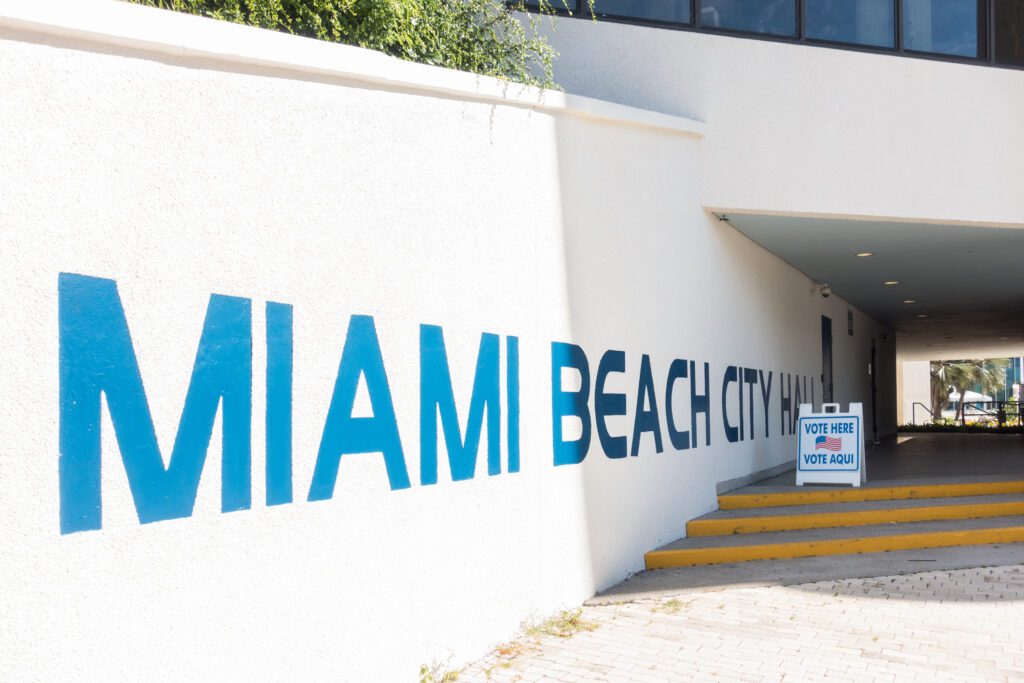When Messaging to Latino Voters, Creative Choices Are Critical

Colin Rogero grew up in South Florida, but made his first foray into media in California, where he got his start working on ad campaigns and entertainment productions. A documentary he made in the Golden State, called “Undocumented,” opened the door to political communication.
Now a partner at media firm 76 Words, he has a sizzle reel that features a who’s who of Latino Democratic officeholders.
C&E: What language should ads targeted to Latino voters be in?
Rogero: You do have to have Spanish language comms as part of your communication program. If you don’t, then you’re really kind of neglecting a universe of voters who want to be part of something and want to understand, but just historically have been sadly ignored.
I think depending on the geography of the particular area you’re communicating in, Spanglish may be a very valid option. I’m from South Florida and in Miami, it’s very common to communicate in Spanglish. We produced a lot of what I would call bilingual comms this year, which were Spanglish done in a way that was effective. And in a lot of the races, we won. One in particular was in New Mexico-02, for Gabe Vasquez’s congressional race.
We started our Spanish language comms before we moved into the English language communications. It turned out to be a very difficult, hard-fought race, but we ended up winning by a thousand votes. I’m convinced it’s because we did not hemorrhage Latino voters like some other folks did.
C&E: What about digital spots? Are the rules different?
Rogero: [Latino voters] will watch and have an opinion on ads that are English language, but subtitled in Spanish. There are multiple reasons for that. One is that a lot of digital advertising is viewed with the sound off, so you’re seeing the visuals, you’re naturally consuming the ad and it seems like it’s in whatever your dominant language may be, right? But it’s a little bit of a false choice, to be honest, because having a Spanish language [voiceover], versus an English language [voiceover] is a measure of another thousand dollars paying a VO talent. Is it worth spending 1 percent of your budget, or 5 percent of your budget to have the option in both languages? If you had to just do one, and it was digital, you could get by with an English language ad that was subtitled in Spanish, and that would be okay.
C&E: Is there enough good quality stock footage or photos featuring Latinos?
Rogero: It’s woefully inadequate. When I started doing this more than a decade ago, I noticed immediately that there was a lack of good stock imagery, whether it’s still photos or video, of communities of color generally. And so myself and some of my business partners, we made a very specific decision to, on occasion, spend more of our own money on shoots to capture additional materials that we thought would be helpful across the board to communicate with Latino voters or with black voters.
C&E: Activists talk about starting earlier to organize Latino voters. Do you need to advertise earlier, too?
Rogero: You have got to start earlier, and I think you have to start earlier because these audiences are literally up for grabs and they’re gonna be less responsive to last-minute, late advertising than other groups are.
If you’re able to have a longer conversation with somebody, and you meaningfully engage with them then you’re gonna have an impact. Not only are they going to vote for you, but you’re gonna get a group of people who maybe wouldn’t have considered going to vote because they’re actually hearing about the importance of voting and the importance of the issues and the importance of this particular candidate’s position on X, Y, or Z. But in campaigns, our communication has historically been so compressed.
C&E: Are ads targeted to Latino voters getting better?
Rogero: I think, on balance, Spanish language comms is getting better across the board. It’s not where it needs to be. The focus is not where it needs to be yet in terms of targeting voters of color, generally. But it’s getting better.
C&E: Is that because there are more ads getting made or there are more ad makers?
Rogero: The industry hasn’t been great at developing new, young talent. But I think that is changing a lot. The candidates and even the party committees are asking for that now. In previous years, I would have to really push hard to present a quote unquote non-traditional creative concept as a way of approaching a communication challenge that any particular organization or candidate was having.
And now there are people on the front end who are like, ‘Oh, I am calling you because you do that work that is non-traditional.’ There’s a realization that the way communication occurs nowadays from a paid perspective and mechanical perspective is completely different than it was even five years ago.

